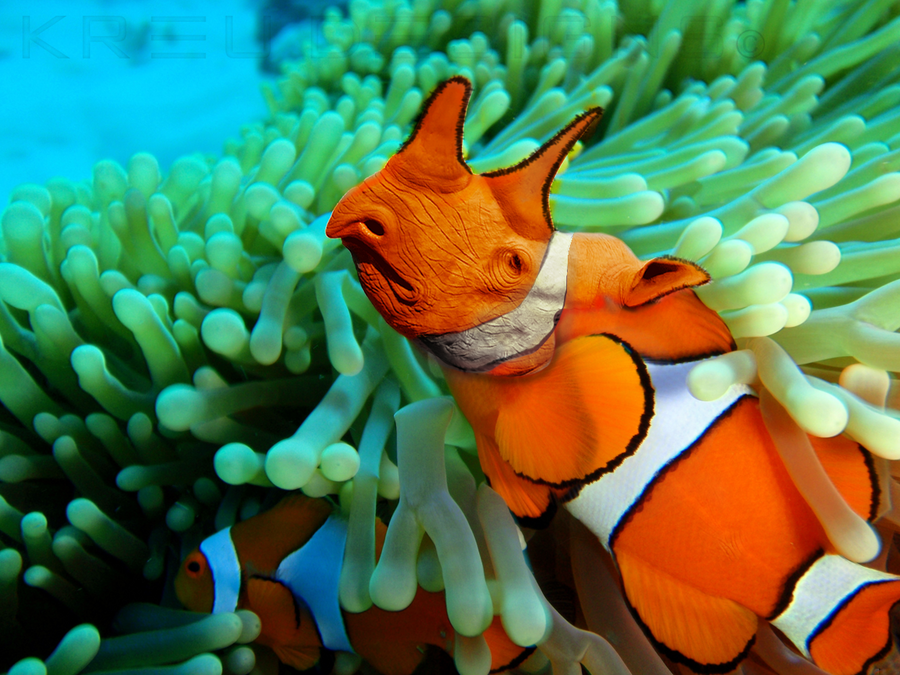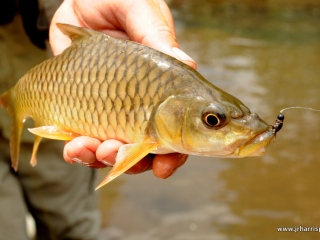Rhinofish
Barbus mariae is a large growing barb species from East Africa.
System
Barbus mariae is probably related to Barbus oxyrhyncus, which also occurs in East African rivers. The taxonomy of the species is so far not been clearly determined.
Occurrence
Barbus mariae is endemic only in some rivers of East Africa, they were detected in the Tana and Athi River in Kenya.
Description
The barb species is English called Rhino Fish or Pangani Barb and classified among the synonyms Barbus Barbus rhinoceros and mater. In Kenya, the fish also Domo, Kambale, Kasinya, Koovo or Matonzi is called. The name designation Rhino Fish is because older specimens a little hard bone horn train above the nose. This was mentioned by Hugh Copley for the first time in 1952 in his book "The Game Fishes of Africa". The fish have a dark olive-green and silvery flanks game skid, as well as dark or reddish fins. Barbus mariae adheres preferably in fast-flowing water of the rapids in the upper reaches of the Athi and Tana Rivers and lives exclusively predatory prey fish such as small cash species and tilapia cichlids. On average, the barbels are 30 inches long, in exceptional cases, but also significantly größer.Das largest specimen weighed about 45 kilograms and came from the Tana River in Kenya Copley mentioned a very kapitales copy from the Ol Doinyo Sabuk National Park, the biggest fish come from but from the Tana River. About life, stock situation and current threat status as an endangered species due to lack of data, little is known.










